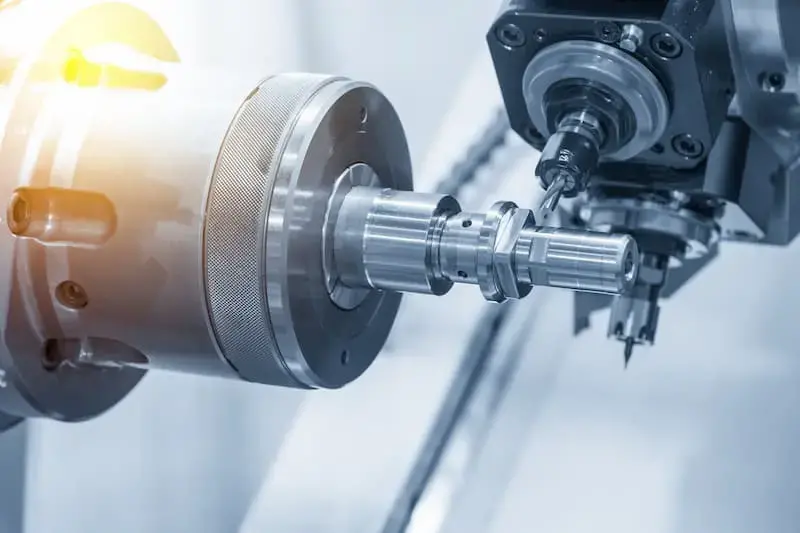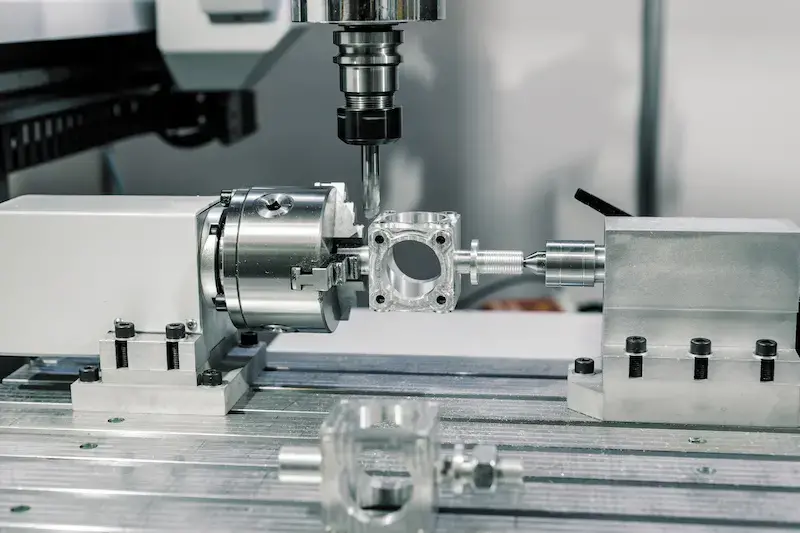Human operators used to supervise the process of shaping plastics, metals, and other such materials when precision engineering was not popular in manufacturing. Shaping materials through human operators usually led to issues, such as inferior quality and inaccurate measurements. In recent times, we have witnessed inventions in the field of computer technology and the upskilling of the operators. Due to these latest advancements, the manufacturing of components and parts has become easier and more flawless than ever before. CNC turning parts is a prominent example of progression in the technology that has led to a boom in the precision engineering world.
The CNC turning process is based on the lathe, which is the oldest machining tool across the world. In fact, the ancient Egyptians used lathe in the manufacturing industry. Several centuries later, John T. Parsons invented NC (numerical machining) in the late 1940s. Parson was actually tasked by the United States Air Force to find the most economical way of aircraft parts production that fit complex specifications. Due to his efforts, NC machining emerged as the model in the manufacturing industry.

In 1967, computer-controlled machining idea started to circulate. Then in 1976, we witnessed the very first 3D computer abetted machining systems. Finally, in 1989, CNC Turning & Machining emerged as an industry standard. Today, it is the most efficient and economical way of turning parts in the manufacturing industry.
During the process of CNC turning parts, the lathe secures and turns the raw material. A cutting tool (single point) is moved equivalent to the rotation axis, giving shape to the material. CAD software fed exact measurements into the machine. The computer reads the information and controls the lathe to make sure that the parts meet the specifications. This is unlike conventional machining, as it’s the workstation that rotates instead of a cutting tool.
The CNC turning process is normally used for making more oblong or cylindrical shaped components because of the way it operates. This technique is selected ahead of the 3D printing and CNC Milling due to its capability to create multiples of the same part/component from the raw material’s single piece in a quick way. Now, let’s go through the available types of lathes.
In the process of CNC turning parts, manufacturers use different lathes types. Every single type of lathe is selected according to diverse requirements on different projects. While there are many, but the below listed are the lathes styles that are used very commonly in the precision engineering industry.
Horizontal CNC Lathes: It is the most machine in the CNC Turning process and it grips workpiece from one side.
Horizontal Turning Centres: It is the enclosed type of CNC lathes and it has the ability to integrate drilling and milling capabilities. These machines include things, such as coolant flooding abilities and conveyer belts.
Vertical CNC Lathes: This is a large, ram-type machine, the vertical boring mills. The workpiece gets the mechanical grip from the bottom spin like the top.
Vertical CNC Centres: It is the combination of both CNC mill and horizontal turning centers. It usually has smaller footprints when compared to its counterparts.
Now, let’s talk about the different advantages that come with it.
There are so many reasons why manufacturers prefer CNC turning over manual turning. This computer-assisted technology is not only economical but also ensures improved production efficiency and speed. It means that the manufacturers have the freedom to produce a lot of components in no time. CNC Turning offers enhanced precision level so the manufacturers find it a great solution for waste reduction.
Here are some of the key advantages of CNC Turning:
Unlike manual labor, the CNC machinery can operate uninterruptedly over long periods of time. This improves efficiency and productivity.
You need limited skills and training to operate the CNC machines in comparison to the manual machines.
You need to program the product design just once using computer software. After that, the machine will replicate the design flawlessly every time you need it for any quantity of order.
You can reprogram the design easily and quickly to manufacture different parts. This will help your operations fulfill the customer demands in an efficient way.
Computer software controls the machinery, so you will need a few technicians for oversight and operations. This significantly cut overall expenses.
This technology is based on computer precision that simply beats the manual capabilities in many ways. It is possible to perform more intricate and complex operations with CNC machining.
In fact, there are a lot more reasons why manufacturers prefer CNC turning technology across the world.
The CNC turning process is very versatile among all other types of manufacturing processes. Even though major industries like aerospace, engineering, and automotive use CNC, still the CNC turning can also develop objects, such as ornaments and art pieces.
There are three major categories in which we can divide the different CNC turning parts that can be created using this method. Here are those categories:
The parts of CNC Turning that are created from the metal are usually used in the automotive industry. Different components can be manufactured from materials like aluminum, brass, and steel.
Because the material is strong and lightweight, the manufacturers mainly use aluminum for the production of high-tech products. Aluminum components are extremely corrosion resistant which means that you can use aluminum for many applications.
The parts made of steel are very strong and economic. However, they are usually more expensive when we compare them with the aluminum counterparts. The automotive and aerospace industries primarily use steel components.
The modern-day acrylic materials are very versatile. You can use the acrylic materials for manufacturing several CNC Turning parts. You can make parts from acrylic materials range from microfluidic gadgets to extremely complex machinery parts. Manufacturers use acrylic to develop products that relate to ornaments and art for home or office.
To manufacturer printed circuit boards, you can use CNC Turning. The components manufactured through computer-assisted manufacturing are highly electronically efficient because of their increased precision.
The items that are made using brass are normally linked with the electrical contacts as well as hardware, and many other commercial items. These are very convenient for the machine, so they are also very cost-effective.
Apart from the many advantages that come with the CNC Turning, there might as well as be a few possible downsides. Such possible downsides may include cost, skill loss, and unemployment, etc. But in general, this is currently the best available method to manufacture products for different applications.
[caption id="attachment_2059" align="alignnone" width="800"] Precision milling CNC machine tool makes part. Metalworking.[/caption]
Precision milling CNC machine tool makes part. Metalworking.[/caption]
If you want to create components or parts through CNC Turning, then you can also get expert help from the experts. You should look for experts who provide top-of-the-line precision engineered components for several industries. Only the experts will help you choose the right type of material for the components or parts you want to manufacture for your project. You simply need to share your specific measurements with the experts and they will create the most appropriate parts according to your project specifications.
For More Information Contact Us Today!
Introduction to CNC Machine Parts and Their Function
How CNC Precision Engineering Enhances Quality And Performance